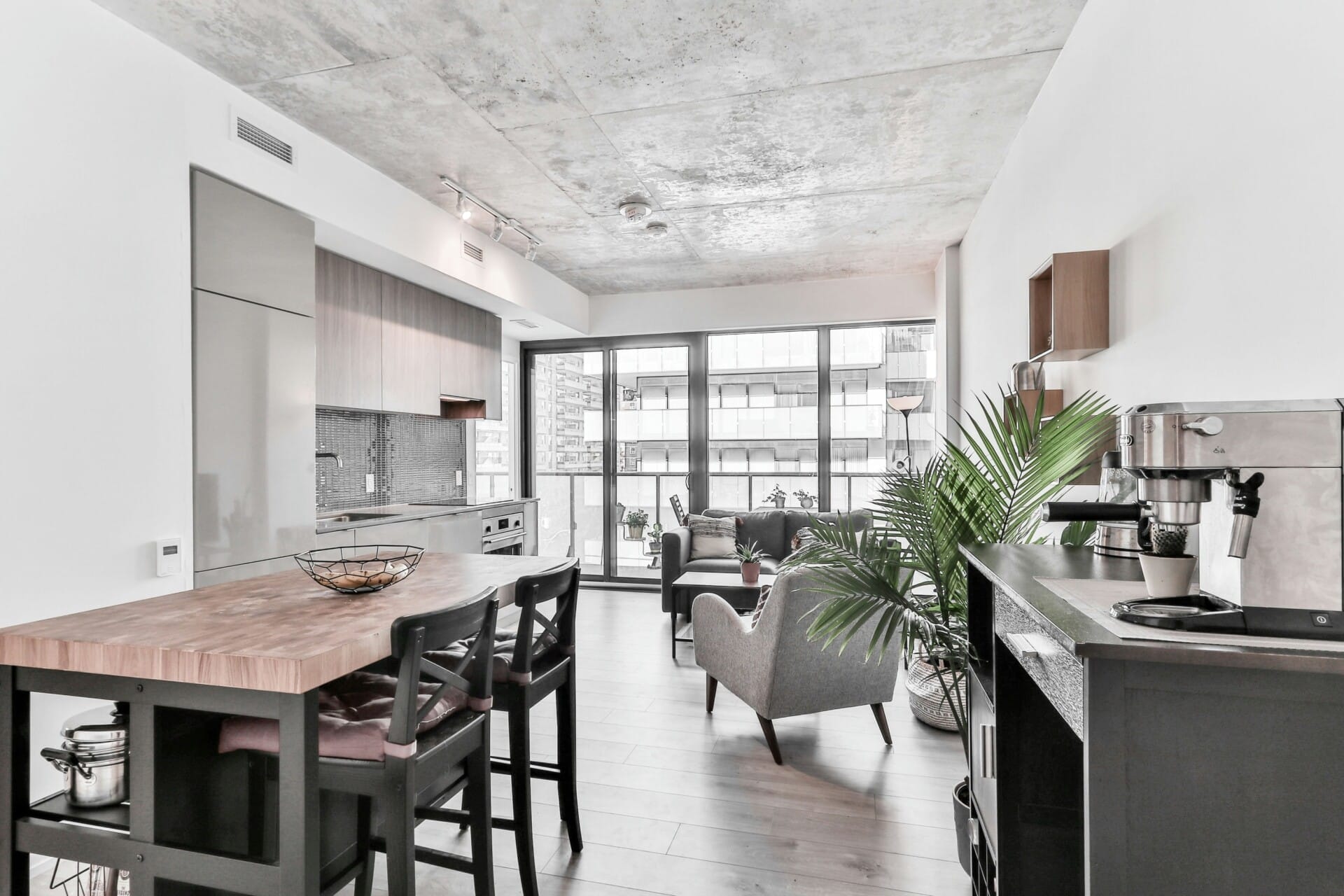Introduction:
Hey there! So, you’re thinking about hiring a contractor for your home renovation, huh? Sounds exciting! But before you dive in headfirst, let’s chat about something a bit less thrilling but super important—how to avoid getting overcharged! We all want our dream spaces without the nasty surprises that can pop up along the way. Unfortunately, some contractors have a few sneaky tricks up their sleeves that could leave your wallet feeling lighter than expected. Don’t worry; we’ve got your back! In this article, we’ll unveil five clever ways some contractors try to pad the bill. With this knowledge, you can head into your next project with confidence and make sure you’re getting your money’s worth. Ready? Let’s jump in!
Understanding the Hidden Costs of Home Improvement Projects
When tackling home improvement projects, it’s easy to overlook the hidden costs that can quickly escalate your budget. Contractors often rely on the assumption that homeowners won’t question small charges, but these “little things” can add up significantly. For example, markup on materials is a common practice; just because a contractor uses high-quality supplies doesn’t mean the prices won’t be inflated on your bill. Always ask for a detailed breakdown to keep track of these costs.
Another sneaky tactic involves the estimation process itself. Contractors might present a low initial quote to get your business, but once the project starts, you may find out that changes to the scope or unexpected issues lead to additional fees. Always be clear about what is included in the estimate. It’s a good idea to set aside a contingency fund of around 10-20% to cover unforeseen expenses, so you won’t be caught off guard later on.
| Common Hidden Costs | Tips to Avoid Them |
|---|---|
| Permit Fees | Check local regulations and include permit costs in contracts. |
| Cleanup Charges | Specify cleanup duties before work begins to avoid extra fees. |
| Design Changes | Discuss potential Design Changes and costs during the planning phase. |

Identifying Ambiguous Terms in Your Contract
When diving into a contract, it’s essential to pay close attention to language that might seem straightforward but could lead to confusion later on. Ambiguous terms are those pesky words or phrases that can have multiple interpretations. For instance, terms like “reasonable time,” “customary practice,” or “good quality” can vary significantly from one party to another. If these sorts of phrases pop up, make sure to clarify them before signing on the dotted line. Set specific definitions to avoid misunderstandings that could lead to extra costs.
Consider creating a glossary of terms that both you and the contractor agree upon. This list should include definitions for any highly technical jargon or industry-specific terminology that might not be universally understood. Having a common understanding can help alleviate disputes later on. If an unclear term arises during your discussions, don’t hesitate to push for clarity. Remember, a well-defined contract is your best tool against overcharging!
Additionally, keep an eye out for conditional clauses that may come across as innocuous but can actually set you up for potential extra charges. For example, phrases like “subject to availability” or “depending on circumstances” could leave room for a contractor to modify costs as they see fit. Make use of a simple table to pinpoint these terms along with your personalized definitions, which can serve as a handy reference:
| Term | Definition |
|---|---|
| Reasonable Time | Specify exact time frames to avoid delays. |
| Good Quality | Define specific standards or metrics. |
| Subject to Availability | Clarify what happens if materials or services are unavailable. |

The Art of Inflated Material Estimates
When it comes to project estimates, some contractors have a knack for inflating material costs, leaving you with a hefty bill that feels unfair. These hidden tactics can add up quickly, so it’s crucial to be aware of how they operate. Often, they may present you with an elaborate breakdown of costs that makes their pricing seem justified, even when it’s far from reality.
One common maneuver is the inclusion of premium or branded materials that aren’t necessary for your project. While quality is important, many contractors will suggest top-shelf products just to boost the bottom line. To counter this, it’s essential to do your homework and compare the suggested materials against industry standards. Here’s a quick reference table to illustrate how pricing can vary:
| Material Type | Standard Cost | Contractor Suggested Cost |
|---|---|---|
| Cement | RM 15/bag | RM 25/bag |
| Plywood | RM 60/sheet | RM 90/sheet |
| Tiles | RM 30/sqft | RM 50/sqft |
Another trick is to misrepresent the quantity of materials needed, often padding the estimate with surplus supplies that you’ll never actually use. A savvy contractor will pad a bill for header beams or framing wood that goes unnoticed. To protect yourself, always ask for detailed estimates and check the quantities against your project specifications. Keeping tabs on how much material is truly needed can save you from unnecessary charges that might leave you stunned at the end of the project.

Unpacking Unnecessary Change Orders
Change orders can sometimes feel like they’re coming out of nowhere, adding unexpected costs to your project. While some changes are necessary due to reality checks on-site, others might just be clever tactics used by contractors to inflate their bills. Here’s a look at how you can spot these unnecessary adjustments.
First off, look out for vague descriptions in change orders. If the contractor is listing changes without clear details, it’s a red flag. Make sure to ask for specifics. A good change order should include:
- Detailed descriptions of the work to be done
- Materials needed for the job
- Clear timelines for when the job will be completed
Another common trick is a sudden need for expensive materials that weren’t previously mentioned. Contractors might shift the blame and say the original plan is unsuitable, but in reality, it could be their way of squeezing more money from you. Keep a close eye on the materials list and don’t hesitate to ask for alternative options. Here’s a simple comparison table to help you assess common materials:
| Material Type | Cost Estimate (per unit) | Alternatives |
|---|---|---|
| Premium Paint | RM150 | Standard Paint – RM80 |
| Luxury Tiles | RM200 | Standard Tiles - RM100 |
| High-End Fixtures | RM300 | Basic Fixtures - RM150 |
don’t forget to question the urgency of the change orders. Contractors might push you to approve changes quickly, claiming it’s essential for moving forward. Always take a step back and evaluate whether these changes are genuinely critical or just a tool to boost their profits. Remember, a little skepticism can save you a whole lot of money!

Spotting Phantom Labor Hours on Your Bill
When you receive your bill, one of the most common red flags to look out for is the presence of phantom labor hours. These are hours that appear on your invoice but may not accurately reflect the time actually spent on your project. It’s crucial to keep a close eye on the details, as they can easily slip through the cracks if you’re not vigilant. Often, contractors may have a habit of rounding up hours or adding extra hours for tasks that weren’t performed. This can lead to significant discrepancies in your final bill.
To avoid being caught off guard, consider implementing the following practices:
- Request detailed billing: Before you sign any contracts, ask for a clear breakdown of labor hours and associated costs.
- Keep track of progress: Document the hours spent by contractors during the job. A simple weekly log can help you compare your records against their invoices.
- Consult with others: If you have friends or neighbors who’ve recently hired similar work, ask them how long it took and what they were charged.
Additionally, having a clear contract in place is vital. Not only does it provide a written record of agreed-upon hours, but it also strengthens your position in case of disputes. Create a simple comparison table of expected hours versus billed hours to help you spot any anomalies:
| Task | Expected Hours | Billed Hours | Difference |
|---|---|---|---|
| Installation | 5 | 8 | +3 |
| Painting | 3 | 4 | +1 |
| Cleanup | 2 | 2 | 0 |
By staying proactive and organized, you’ll minimize the risk of falling victim to deceptive billing. Remember, the more informed you are, the better equipped you’ll be to challenge any phantom labor hours on your bill and ensure that you’re only paying for the work that was truly completed. Your hard-earned money deserves to be spent wisely!

Navigating Overpriced Subcontractor Fees
When it comes to dealing with subcontractor fees, there are a few tricks that can leave your wallet feeling lighter than you’d like. Often, contractors inflate their quotes by claiming higher rates due to “specialized skills” or “rare materials.” This can be frustrating, especially if you’re not well-versed in the industry. The key here is to do some research beforehand. Familiarize yourself with basic industry rates for labor and materials in Malaysia, so you can spot when prices are suspiciously high.
Another sneaky tactic involves bundling services together. Contractors may suggest a package deal that seems appealing on the surface but actually includes services you don’t need or that can be procured cheaper elsewhere. Always request a detailed breakdown of costs associated with each part of the project. Being clear about what you need not only helps keep costs in check but also ensures you’re not paying for unnecessary extras. A simple table can help to visualize the options:
| Service | Estimated Cost | Notes |
|---|---|---|
| Basic Electrical Work | RM 1,000 | Standard rate for local subcontractors |
| Additional Lighting Installation | RM 800 | May be bundled unnecessarily |
| Painting | RM 1,200 | Check for local prices |
Lastly, be cautious of “emergency” or last-minute fees. Contractors may try to charge you extra for scheduling flexibility or pulling in extra resources to meet a tight deadline. While it’s understandable to need things done quickly, it’s essential to have these terms clarified in your contract from the get-go. Ask the contractor to itemize any potential emergency fees so you have a clear understanding of what you might face down the line. Going into negotiations with informed expectations can save you from unexpected and inflated costs.

Protecting Yourself with Thorough Research and Planning
When you’re about to start any project with a contractor, the key to a smooth experience is diving deep into research and proper planning. First off, knowing your stuff helps you spot red flags. Look into the contractor’s previous work, read online reviews, and check for any complaints lodged against them. Understanding the market rates can also arm you with the confidence needed to negotiate prices and spot any suspicious hikes in estimates.
It’s often beneficial to draw up a detailed project outline. This means listing everything you want, from materials to timelines. Having this clarity not only sets your expectations but also gives you a solid framework to compare estimates from different contractors. It’s easier to question a contractor about vague costs when you have specifics in front of you. Also, don’t forget to ask for written quotes. Comparing these can reveal inconsistencies and help you hold contractors accountable.
| Tip | Description |
|---|---|
| Compare Quotes | Gather at least three different quotes to understand the price range. |
| Check Credentials | Ensure the contractor has the necessary licenses and insurance. |
| Read Contracts Carefully | Look for any fine prints that might lead to hidden fees. |
In addition, involve a trusted friend or family member during your planning phase. Fresh eyes can catch things you might miss and their input could lead to new ideas. This buddy system not only provides support but also acts as a second layer of oversight. when you couple thorough research with meticulous planning, you’re better equipped to dodge the tricky tactics some contractors might try to pull. Stay informed, stay sharp!
The Conclusion
And there you have it! Just like a magician revealing their secrets, we’ve pulled back the curtain on the sneaky ways contractors might try to lighten your wallet more than you’d expect. Remember, it’s all about being informed and staying one step ahead.
So, whether you’re renovating your home or diving into a construction project, keep these tips in your back pocket. Ask questions, get everything in writing, and don’t hesitate to get a second opinion if something doesn’t sit right.
At the end of the day, you deserve a fair deal and a quality job, so don’t let anyone pull a fast one on you. Stay savvy, stay aware, and happy building! 🌟







